Glen House (Kilmeaden)
Houses within 15km of this house
Displaying 117 houses.
Houses within 15km of Glen House (Kilmeaden)
Displaying 117 houses.
| House name | Description | |
|---|---|---|
| Carrick House | The sale rental of 1851 records Walter Herbert holding the mansion house and demesne on a renewal lease dated 1796. This house no longer exists. | |
| Mount Richard | Mount Richard was the residence of John Power in 1837 and in the early 1850s when the buildings were valued at £30.10 shillings and held from the Earl of Bessborough. This house is still in use as a residence. |
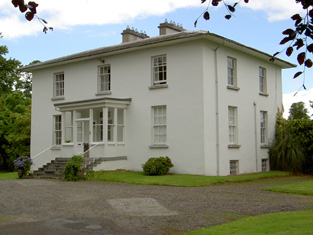
|
| Tinvane | This house was the home of the Briscoe family in the 19th century. In 1841 The Ordnance Survey Name Books described it as "handsomely situated...having plantations, gardens, orchard and ornamental grounds". Henry Briscoe was the occupier at the time of Griffith's Valuation when the buildings were valued at £26 and in the 1870s Henry W. Briscoe of Tinvane owned 127 acres. The property was held from the Earl of Bessborough. Now function as a guest house known as Cedarfield House. For an older image of this house, see http://www.waterfordcountyimages.org/exhibit/web/DisplayWAIImage/K0fV5VPbSPSwE/ |

|
| Villa Mantilla Verda | On the outskirts of the town of Carrick on Suir, this house was occupied by Mrs Sophia Manderville in the mid 19th century. She held it from Walter Herbert [nephew of Dorothea Herbert] and the buildings were valued at £16.11 shillings. | |
| Carrick Castle | A 16th century house built by the 10th Earl of Ormonde, which was abandoned by the family in the 18th century. Lewis wrote in 1837 “The castle is still a stately building although much of it is in ruins; it was for many years the residence of the Ormonde family, and part of it has been converted into a private residence”. At the time of Griffith's Valuation it was vacant and valued at £19. Taken over by the Office of Public Works in the 20th century and restored as a national monument. Now functions as a museum. |
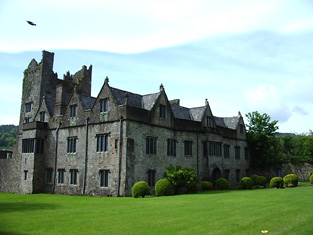
|
| The Cottage | The home of William O'Donnell in 1837 and in the early 1850s held from the representatives of Michael D. Keating. The building were valued at £18+ in the mid 19th century. Richard O'Donnell of Carrick on Suir owned 359 acres in the 1870s. | |
| Cregg | The home of a branch of the Lalor family in the 19th century. Thomas E. Lalor is recorded for Creg in 1814 and Lewis writes in 1837 of his handsome residence erected "about ten years since". Cregg was occupied by his son Thomas in the early 1850s. Thomas held the property from the Marquess of Ormonde and the buildings were valued at almost £40. Passed to the Sadlier family of Castleblake, county Tipperary at the end of the 19th century. In 1906 it was valued at £41 and occupied by Annie Sadlier. This house is still a fine residence. |
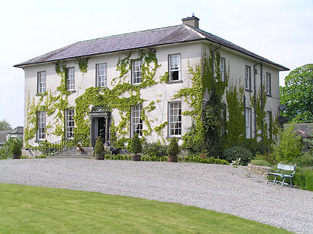
|
| Ballynagrana | Taylor and Skinner's map indicates that this is the location of the house originally known as Wilmar, which was occupied by Nicholson Esq in the 1770s. Wilmar Mill is marked closeby in the townland of Ballyrichard on the first edition Ordnance Survey map. The Ordnance Survey Letters refer to the property as Wilmer House in 1840. Lorenzo Hickie Jephson lived at Wilmar for some time in the early 19th century. Francis Mandeville was resident in 1814. Denis Kennedy occupied a house in Ballynagrana, held from Denis Hayden and valued at £13.14 shillings at the time of Griffith's Valuation. Ellen Hayden of Ballynagrana owned 255 acres in county Tipperary in the 1870s. This house is no longer extant. | |
| Mayfield or Rocket's Castle | The property at Rocketscastle was held in fee by Rev. John T. Medlicott at the time of Griffith's Valuation, when it was valued at £36. In 1906 he was still the owner of the property then valued at £30 10s. Morris states that this property was originally part of the May estate and known as Mayfield . Smith, writing in 1774, refers to Mayfield as "the pleasant seat of Sir James May, formerly called Rockett's Castle" and Wilson also mentions it as his residence in 1786. The original Rockett's Castle was in ruins by the time of the 1st Ordnance Survey and this house was built after that on an adjacent site. The 1943 ITA survey, indicates that the Medlicotts had adapted the old castle building as an engine house at that time. A house is still extant at the site. | |
| Knockane House | In 1850 Thomas Rockett was leasing a property valued at almost £9 from the Medlicott estate.This house had been constructed after the appearance of the 1st edition Ordnance Survey map in 1840. A second adjacent property was leased by James Rockett and valued at almost £8. There is still an extant house at the site. | |
| Springfield (Portlaw) | Robert Shaw was leasing this property from the Medlicott estate in 1850 when it was valued at £39. He was the director of some of the industrial enterprises in Portlaw. Springfield is still extant and occupied. |
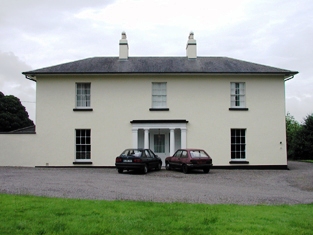
|
| Mayfield (Portlaw) | Mayfield was held by William Malcolmson from the Medlicott estate at the time of Griffith's Valuation, when it was valued at £50. Lewis refers to it as the seat of J. Malcolmson in 1837. In 1906 it was the property of William Malcomson and valued at £31. It is now a ruin. |
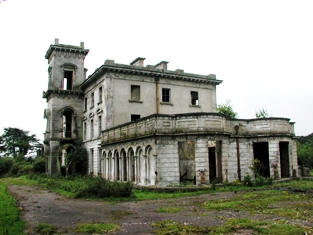
|
| Woodview House (Portlaw) | Dr. James Martin, MD, was leasing this property from the Malcolmson family at the time of Griffith's Valuation, when it was valued at £25. It is still extant and occupied. |
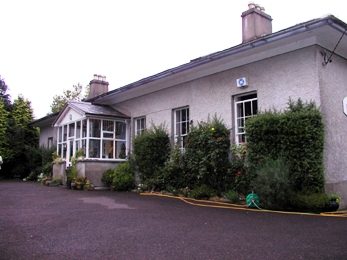
|
| Milfort/Milford House (Portlaw) | Milfort House was another property held by the Malcomson family in Portlaw. It was part of a complex designed by the well-known architect John Skipton Mullvaney. Milfort was demolished in the mid-twentieth century but some estate architecture survives. |
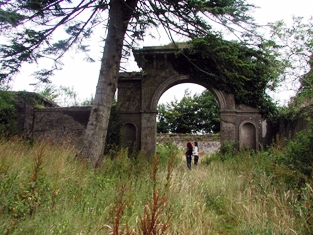
|
| Mountbolton | Pierce Henebery was leasing this property from Jane Bolton at the time of Griffith's Valuation, when it was valued at £12 15s. In 1786 Wilson states that Mount Bolton was the seat of John Bolton. The original house was not extant by the time the 25-inch Ordnance Survey map was published in the 1890s and the site is now occupied by farm buildings. | |
| Coolnamuck Court | At the time of Griffith's Valuation, Coolnamuck was held in fee by James Wall when it was valued at £64.Smith describes it as "the pleasasnt seat of William Wall" in 1777. Bence-Jones noted the house had a curved bow with domed roof and contained a ballroom. Bought by the Sadliers circa 1852. A lithograph of this house is included in both the Wall and Sadlier sale rentals of May 1852 and July 1857. Richard O'Donnell was the tenant at that time. The 1943 ITA survey mentions the existence of this house but it was demolished later in the twentieth century. A folly remains in the former demesne lands. |

|
| Rath (Fenoagh) | In 1850 Jane Bolton was leasing this property to Anne Power when it was valued at £12 15s. A farm still exists at the site. | |
| Abbey House | James Veale was leasing this property from the Congreve estate in 1849 when it was valued at £10. A house is still extant at the site. |
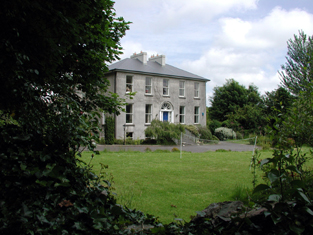
|
| Abbey Farm | A house built after the publication of the 1st edition Ordnance survey map, it was being leased by Henry Bannon from John Congreve's estate in 1849 when it was valued at £10. A house is still extant at the site. | |
| Ballyrobin | Leased by William Hanbury from Josiah Pope at the time of Griffith's Valuation, when it was valued at £12.Original buildings do not seem to be extant at the site which is now situated in county Kilkenny. | |
| Riverview (Kilculiheen) | Joshua Williams was leasing Riverview from Richard C. Pope in 1849 when the house was valued at £37 10s. There is still an extant house at the site. | |
| Sionhill House | Rev. Alexander Alcock was leasing this property from the Pope estate at the time of Griffith's Valuation when it was valued at £46 10s. It is still extant and famous for its gardens which are open to the public at certain times as well as offering guest accommodation. |
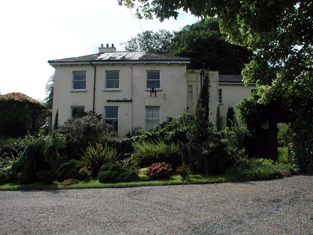
|
| Belmount House (Kilculiheen) | Held in fee by Sir Henry Barron at the time of Griffith's Valuation, when it was valued at £100. Labelled as Belmount House on the first edition Ordnance Survey map but as St. Patrick's Institution on the later 25-inch edition. Institutional buildings still exist at the site. | |
| Graigue Lodge | Leased by John Grace from the Barron estate at the time of Griffith's Valuation. It is described as a "steward's house" and valued at £17 10s. It is named Graigue Lodge on the 1st edition Ordnance Survey Map and as Belmount Cottage on the 25-inch edition of the 1890s. The site is now occupied by a modern housing estate. | |
| Curraghmore | The house at Curraghmore is centred on the old medieval tower house of the Le Poer family to which various additions and renovations have been added. Both Smith, writing in 1774 and Wilson, writing in 1786, offer detailed contemporary descriptions of the house and demesne . At the time of Griffith's Valuation, it was valued at £210. In 1906 it was valued at £200. The 1943 ITA survey describes it in detail, stating that it was one of the finest properties in Munster, if not in all of Ireland. It is still extant and occupied by the Le Poer Beresford family. See www.curraghmorehouse.ie for more information. |

|
| Guilcagh House | At the time of Griffith's Valuation, Guilcagh was held in fee by the Beresford estate and valued at £17 10s. In 1906 it was still part of Lord Waterford's estate and valued at £16. It is no longer extant. | |
| Whitestown | Described as a huntsman's house in Griffith's Valuation in 1850, Whitestown was then valued at £14. In 1906 it was still part of Lord Waterford's estate and valued at £11. It is no longer extant. | |
| Milford House | In 1850, Mrs. Anne O'Brien was leasing this property from the Medlicott estate when it was valued at £10 15s. Morris refers to a Rogers family "of Coolroe" in the mid eighteenth century. This house is no longer extant. | |
| Ballyvallikin | In 1850 this property was being leased by John and Margaret Fitzgerald from Lord Waterford's estate when it was valued at £11. It was still part of the Waterford estate in 1906 and valued at £11 5s. Extensive farm buildings still exist at the site. | |
| Laherdan House | In 1850, John Whelan was leasing this property from the Beresford estate when it was valued at £11 10s. It is labelled Laherdan House on the 25-inch Ordnance survey map of the 1890s. A house is still extant at the site. | |
| Ballydurn | Ballydurn was leased by George Moore from the Beresford estate in 1850 when it was valued at £10. An extensive farm exists at this site. [Grid Reference is approximate] | |
| Ballyknock | A house valued at £12 10s which was vacant at the time of Griffith's Valuation . Probably in the possession of Thomas Dooley who was leasing property from the Beresford estate in the area. There is no house visible on the later 25-inch map of the 1890s. | |
| Ballyneal House | Ballyneal was held from the Waterford estate by William Shanahan (David) at the time of Griffith's Valuation, when it was valued at £14 10s. A second house in the townland, leased by William Shanahan (John) was valued at £12 10s [S373150] There is still a house extant at this site. | |
| Ballynevin | James Moore was leasing two properties from Lord Waterford at Ballynevin at the time of Griffith's Valuation. One was valued at £22 and the second [S399178] at £10 10s. Substantial farms still exist at both sites. | |
| Bishopstown (Upperthird) | At the time of Griffith's Valuation, Catherine Hally was leasing this property, valued at £11, from the Trustees of Waterford College. Modern buildings exist at the site now. | |
| Clonea Mill | In 1850 Judith Ryan was leasing this property from the estate of Sir Benjamin Morris Wall, when it was valued at £21, including a mill. It is labelled Corn Mill on the 1st edition Ordnance Survey map but is not marked on the 25-inch map of the 1890s. | |
| Feddans | Reverend John Condon, PP, was leasing this property from the Power estate in 1850 when it was valued at £11. The parochial house is labelled on the 25-inch Ordnance Survey map of the 1890s. A house is still extant at the site. | |
| Glenstown | Leased by Johanna Cormack from Lord Waterford's estate in 1850 when it was valued at almost £14. A farm exists at the site now. | |
| Kilcanavee | In 1850 William Hunt was leasing this property from Lord Waterford's estate when it was valued at £13. A farm exists at the site now. | |
| Oldgrange House | Nicholas O'Neill Power was leasing this property to James Quinn at the time of Griffith's Valuation, when it was valued at £9. Buildings are still extant at the site. | |
| Whitestown | In 1850,Lord Waterford held a property described as a "huntsman's house" in fee at Whitestown. It was valued at £14. Substantial kennels are shown nearby on the 25-inch Ordnance Survey map of the 1890s and this building is still extant. | |
| Whitestown House | David Shanahan was leasing Whitestown House from the Marquis of Waterford's estate in 1850 when it was valued at 16 10s. The original house is now derelict. This may be the property to which Wilson refers in 1786 when he notes it as seat of Mr. Ducket. | |
| Rathgormuck Castle | The buildings in the vicinity of Rathgormuck Castle were valued at £10 in 1850 and leased by Walter Mansfield to Thomas Terry. On the first edition Ordnance Survey map the castle is described as "in ruins". | |
| Shanakill (Upperthird) | John Hearne was leasing this property from the Power estate at the time of Griffith's Valuation, when it was valued at £11 10s. Morris states that the Hearns had held an interest in this property since the 1720s. Financial difficulties led to its sale to Mary Anne Quin in 1866. In 1906 it was owned by Anne Ussher Quin and Frances Anne Quin and was valued at £18 10s. This house was also associated with the Labarte family. A house is still extant at the site. | |
| Newtown House (Waterford) | At the time of Griffith's Valuation, Eaton Edwards was leasing this property to James Aylward, when it was valued at £28 10s. The site now appears to be occupied by a building known as Farmlea. | |
| Christendom House | At the time of Griffith's Valuation, Benjamin Whitney was leasing this property from the Rea estate when it was valued at £32 10s. This house is no longer extant. | |
| Rockland House | Rockland House, now the Athenaeum Hotel, was leased by the Ray family to William Snow at the time of Griffith's Valuation. It was valued at over £52. The hotel history indicates it was built in the early nineteenth century by the White family who had major shipbuilding interests in Waterford at that time. See www.athenaeumhousehotel.com for more information. | |
| Mountain View (Waterford) | Held in fee by Josiah Pope at the time of Griffith's Valuation when it was valued at £37 10s. His address is given as Rockshire, Waterford, in the 1870s. A hoiuse is still extant at this site. | |
| Rockshire House | Leased by Samuel Grubb from Richard C. Pope at the time of Griffith's Valuation, when it was valued at £62 10s. In 1837 Lewis refers to Rockshire as the seat of the Hon. Mrs. Greene. The building is still extant and occupied as apartment accommodation. |
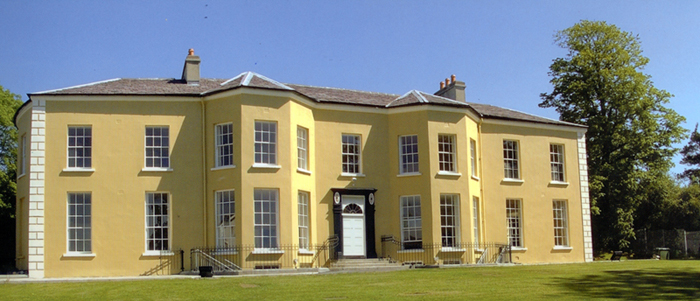
|
| Rockingham House (Waterford) | At the time of Griffith's Valuation Richard W. Morris was leasing this property from Mrs. Elizabeth Hassard, when it was valued at £65. The building at this site now is named Rockenham Court. | |
| Newrath House | A house later associated with the Morris family. At the time of Griffith's Valuation, Newrath seems to have been occupied by Amelia Hobbs, leasing from the Corporation of Waterford. The house was valued at £32. It is still extant and in 2012 the house was offered for sale. |
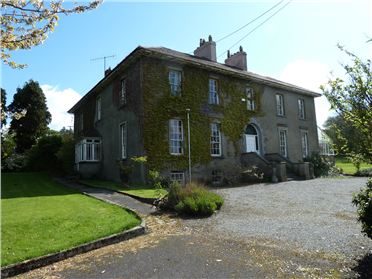
|
| Annestown House | Rev. John B. Palliser held a vacant property at Annestown in 1850 which was valued at £16. In 1814 it was the seat of St. George Cole. In 1906 it was the property of Wray Palliser and valued at £22. It passed to the Galloway family though the marriage of Sybil Palliser and Harold Galloway before World I. It remained in the Galloway family until 2008 and in 2010 was offered for sale. |
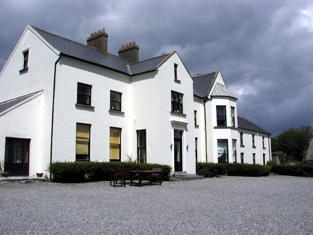
|
| Dunhill Lodge | John Power was leasing this property from the Palliser estate in 1850 when it was valued at £19. Leet's directory (1814) and early nineteenth century will records (1834) show it was the residence of William Power. There is still an extant house at the site. | |
| Benvoy | Mrs. Catherine Power held Benvoy in fee at the time of Griffith's Valuation, when it was valued at £15 5s. In 1814 William Power was resident at Benvoy. There is still a house at this site. | |
| Butlerstown House (Middlethird) | Edward T. Power was leasing this house from Richard Duckett at the time of Griffith's Valuation when it was valued at £11 15s. This house is longer extant. | |
| Butlerstown Castle | The Sherlock family had been in possession of Butlerstown Castle and estate since the 1560s. Wilson, writing in 1786, refers to Butlerstown as the seat of Thomas Sherlock. In the 1790s a disastrous fire saw much of the property destroyed and subsequently the family moved to county Kilkenny although they continued to hold estates in the area. At the time of Griffith's Valuation, it was the property of Robert Backas, three generations of whose family lived at Butlerstown, before departing at the end of the 1850s. Between then and the 1880s Butlerstown was occupied by Samuel Ferguson. In 1894 Slater refers to the property as the seat of Thomas Prendergast. Only the ruin of the castle survives but the Coachhouse is in use as Guest Accomodation. | |
| Carrickphierish A | Paul Heney was leasing this property from Waterford Corporation at the time of Griffith's Valuation when it was valued at £15 10s. | |
| Knock House (Waterford) | Andrew Ryan was leasing this property from Waterford Corporation in 1850 when it was valued at £18. | |
| Lismore House (Waterford) | Leased by Francis O'Grady from Waterford Corporation in 1850 when it was valued at £13. | |
| Carriganore House | John Strangeman was leasing this property from the Corporation of Waterford in 1850 when it was valued at £22. It now forms part of the Western Campus of Waterford Institute of Technology. |
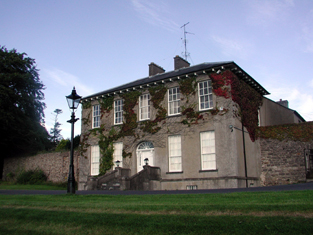
|
| Killoteran House | William Scully was leasing this property from Edward Roberts in 1850 when it was valued at £34. It is still extant and occupied. |
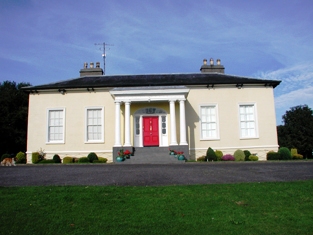
|
| Gracedieu House | James Kearney was leasing this property from James Anderson in 1850 when it was valued at £22. In 178 Wilson refers to Grace Dieu as the seat of Mr. Morris. It is named as Gracedieu House on the 25-inch Ordnance Survey map of the 1890s but is no longer extant. | |
| Wood House (Woodville) | Thomas McGrath was leasing a house and mill from William Christmas at the time of Griffith's Valuation when the two properties had a valuation of £23. This house is labelled Woodvilla on the 1st edition Ordnance Survey Map but Wood House on the later 25-inch edition. A house is still extant at the site. The mill buildings are described as "in ruins" on the 1st edition Ordnance Survey map. | |
| Ballyduff Glebe | Reverend John Bourke was leasing this property from Viscount Doneraile at the time of Griffith's Valuation, when it was valued at £13 10s. It continued to serve as the Rectory for the parish and there is still a house at the site. | |
| Cullenagh (KIlmeadan) | Mrs. Margaret Gamble was leasing this property from Viscount Doneraile's estate in 1850 when it was valued at £11 15s. A house is still extant at the site. |

|
| Fairbrook House | At the time of Griffith's Valuation, Patrick Stephenson was leasing an extensive mill complex from Thomas Gamble at this location. It is described as Fairvew Paper Mill on the 1st edition Ordnance Survey Map and as Fairbrook Factory on the later 25-inch edition. The house and mill had a combined value of £95. The buildings are still extant. |
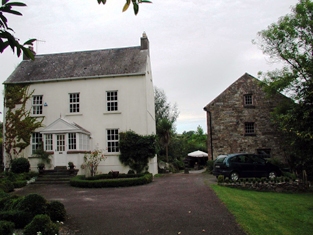
|
| The Pines (Darrigal) | Alexander Sherlock was leasing this property to Michael Nowlan in 1850 when it was valued at £13 10s. It appears to have become known as The PInes by the end of the nineteenth century. Recorded as the seat of Patrick Power by Leet in 1814. There is still a house at this site. | |
| Whitfield Court | In 1850 William Christmas held Whitfield in fee when it was valued at £49. The National Inventory of Architectural Heritage indicates the house was built by him between 1820-1849, replacing an earlier house. Local sources indicate that this earlier house was in the townland of Whitfield and the name was transferred to the existing house when it was built in the adjacent townland of Dooneen. Leet records the earlier property as the seat of Thomas Christmas in 1814. Smith, writing in 1774, mentions the house as "an elegent seat belonging to Thomas Christmas, formerly a Dobbyn castle". In 1786 Wilson refers to Whitfield as the seat of William Christmas. The nineteenth century house is still extant but no longer occupied. |
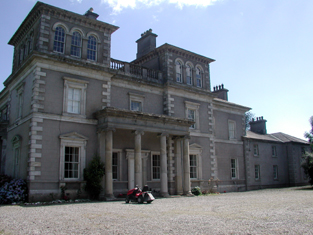
|
| Pouldrew House | In 1850 Edward Eakers was leasing this property from the Malcolmson estate. The property included part of an extensive mill complex, valued at over £36. It is still extant and occupied. |
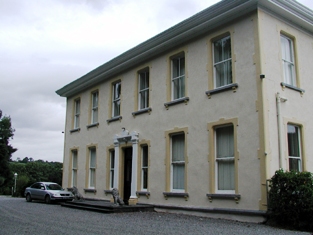
|
| Pouldrew Mill | This property is closely connected with Pouldrew House nearby. In 1850 it was leased by Edward Eakers from the Malcolmson estate and valued at £95. The mill was demolished in the twentieth century. | |
| Pembrokestown House | The house at Pembrokestown probably came into the Esmonde family through the marriage, in the eighteenth century, of Sir James Esmonde, seventh baronet, to Ellice White, daughter of Thomas White, of Pembrokestown. In 1814 Leet refers to it as the seat of William Power. At the time of Griffith's Valuation, in 1850, it was held in fee by Mrs. Anne Esmonde, and valued at £21. In 1894 Slater refers to it as the seat of Patrick W. Power. A house is still extant at Pembrokestown. It was offered for sale in 2025. |
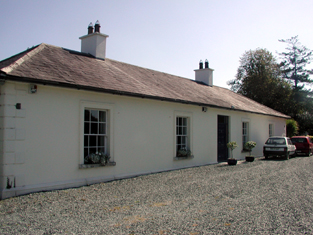
|
| Mount Congreve | Built and owned by the Congreve family from the mid-eighteenth century. Wilson states that it was "the pleasant seat of John Congreve" in 1786. Leet refers to it as the seat of Captain Fleming in 1814. At the time of Griffith's Valuation, in 1850, Mount Congreve was held in fee by John Congreve, when it was valued at £68 10s. It is still extant though a sale of the house contents took place on the premises in July 2012. |
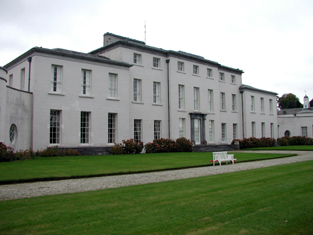
|
| Knockaderry House | The National Inventory of Architectural Heritage notes Knockaderry as a mid eigtheenth century house. Maurice Ronayne was leasing this property from Viscount Doneraile's estate at the time of Griffith's Valuation, when it was valued at £17. It had fallen into disrepair by the beginning of the twenty-first century. |

|
| Rock View /Airmount House | Thomas Pope was leasing this property to Rev. Martin Flynn in 1850 when it was valued at £31. It is labelled Rock View on the 1st edition Ordnance Survey Map but as Airmount House on the later 25-inch edition. Later the property of the Mahony and MacDonald families. |

|
| Summerland | Leased by the Corporation of Waterford to Samuel Strangeman in 1850 when it was valued at almost £40. A building is still extant at the site. | |
| Rathfadden Cottage | In1850 this property was leased by Joshua W. Strangeman from the Corporation of Waterford. | |
| Prospect Lodge (Waterford) | Henry Bolton was leasing this property to Michael Ardagh at the time of Griffith's Valuation when it was valued at £22. It is still extant though perhaps not currently in use. |
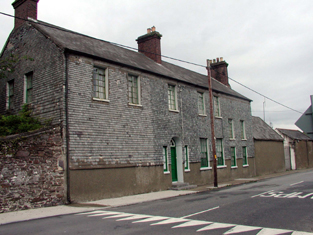
|
| Manor of St. John (Roanmore) | Thomas Wyse is recorded as the lessor of this property in 1850 when it was vacant and valued at almost £32. . In 1814 Leet also noted it as the seat of Thomas Wyse. The house at the site is labelled Roanmore on the 1st edition Ordnance Survey map. A much larger property, labelled St. John's Manor, appears on the 25-inch edition of the 1890s. This house was constructed in the nineteenth century to replace an ancient manor at the site, also belonging to the Wyse family. The building is still extant and now the focus of a Youth Services Project. |
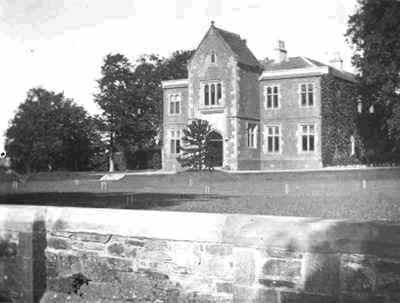
|
| Carrickphierish or Fairview | At the time of Griffith's Valuation, in 1850, this house was occupied by Owen Carroll leasing from Lawrence Roarke. The property was valued at £16. In 1881 the sale of Power property in the Land Judges Court includes a house at this location, described as "fit for the immediate reception of a gentleman's family". No longer extant. | |
| Ballyduff House (Kilmeadan) | In October 1851, the sale notice for Henry Langley's property at Kilmeadan noted that the demesne at Ballyduff was well planted and the house at a little cost could be put into excellent order. The tenant at the time was John Sadlier, MP. At the time of Griffith's Valuation it had been occupied by John William Langley leasing from Henry Langley and was valued at £9. There is still an occupied house at Ballyduff. | |
| Stonehouse | In 1814 Leet records Stonehouse as the residence of Patrick Duckett. This may be the same property leased by Joseph Power from Osborne Boyce at the time of Grifith's Valuation and valued at £9. The original property does not appear to be extant. | |
| Stonebrook [Stafford] Lodge | At the time of Griffith's Valuation, Stafford Lodge was leased by Mrs. Mary Stafford from the Barron estate. It was valued at £15 10s. In the 1870s the representatives of William Stafford of Stafford Lodge owned over 250 acres in the county. On the 25-inch Ordnance Survey map of the 1890s the house is named Stonebrook Lodge. There is still a house at the site. | |
| Rockview (Decies) | Joseph N. Power was leasing this property from Sir Edward Kennedy's estate in 1851 when it was valued at £14 10s. On the 25-inch Ordnance Survey map of the 1890s it is named as Rockview. The house is still extant. | |
| Carrig Castle | Patrick Power was leasing this property from James Mandeville at the time of Griffith's Valuation, when it was valued at £17. In 1837 Lewis refers to it as the seat of H. Power. Smith, writing in 1774, mentions it as "the house and improvements of Peter Anthony". It is not named on the later 25-inch Ordnance Survey map of the 1890s. Large farm buildings are evident at the site now. | |
| Fahafeelagh | In 1851, Nicholas Power was leasing this property from the Barron estate when it was valued at £13. Recorded as the address of Catherine Barron in the 1870s. Wilson, writing in 1786, refers to Faghs as the seat of Mr. Barron. Buildings are still extant at this site. | |
| Lisnageragh | Patrick Power was leasing this property from the College of Physicians estate in 1851 when it was valued at over £17. The property is not visible on the 25-inch Ordnance Survey map of the 1890s. | |
| Seafield (Decies) | In 1851 William Power was leasing this property from Peter Anthony when it was valued at £19. In 1906 the house at Seafield was owned by James Russell and valued at £22. Lewis had noted it in 1837 as the seat of P. Barron. There is still a house at the site. | |
| Furraleigh | Col. Palliser held this property in fee at the time of Griffith's Valuation, when it was valued at £34. In 1906 it was owned by Caroline G. Fairholme and valued at £44. | |
| Kilnagrange Mills | In 1851 Pierce Barron was leasing this property which included Kilnagrange Mills to Mrs. Catherine Dunn. It was valued at £14. Now the site of Flahavans oat milling company. | |
| Georgestown House | Held in fee by James Barron at the time of Griffith's Valuation, when it was valued at £22. Lewis refers to it as the seat of J. Barron in 1837. In the 1870s it was the seat of John M. Barron. The house was offered for sale as part of the Georgestown estate in April 1885 on behalf of Pierse John Barron, a minor. The sale notice describes it as "a two-storey residence in the owner's possession". It was later owned by the Beresford family. In more recent times it was the centre of a stud farm and in 2010 was offered for sale. |
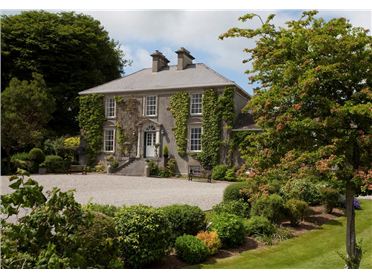
|
| Tankardstown Mine House | In 1851 John Petherick wsa leasing this property from Mrs. Barron's estate when it was valued at £9. A house still exists at the site. Petherick was the mine manager of the Tankardstown Copper Mine. |
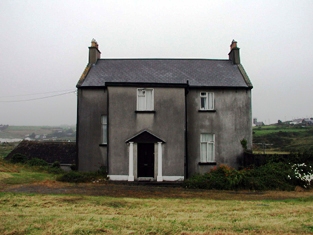
|
| Gardenmorris | Held in fee by John P. O'Shea at the time of Griffith's Valuation, when it was valued at £56. It was also noted by Lewis as his residence in 1837. Smith referred to it as the house of Mr. Richard Power in 1774. Noted by Slater as the residence of Nicholas Power O'Shee in 1894 and owned by Richard P. O'Shee and valued at £57 in 1906. The house was totally reconstructed following its burning during the Civil War in 1922. The ITA survey in 1942 noted that most of the library and works of art in the house were destroyed at that time. It is still extant and occupied. |

|
| Kilbarrymeadan | In 1851 John Casey was leasing this property from the Earl of Stradbroke's estate, when it was valued at £17. It is still extant and occupied in the village of Kill, county Waterford. |

|
| Mountpatrick | Rev. James Veale was leasing from the Power O'Shee estate in 1851 when it was valued at £12. It is still extant and occupied. |
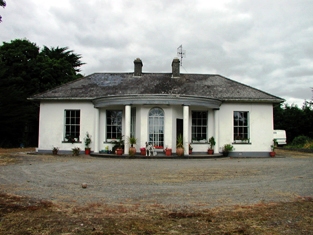
|
| Scrahan | At the time of Griffith's Valuation, Thomas Shanahan was leasing this property from the Marquis of Waterford's estate when it was valued at £14 10s. An extensive farm complex exists at the site. | |
| Whitestown House (Kilmacthomas) | In 1851, Stephen Moore was leasing this property from the Marquis of Waterford, when it was valued at almost £10. It is still extant and occupied. |
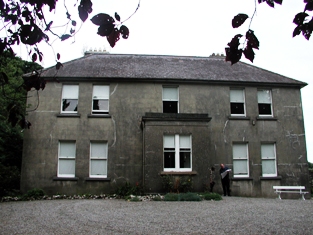
|
| Ballynabanoge | Michael Power was leasing this property to Michael Lenehan at the time of Griffith's Valuation, when it was valued at £9. In 1906 it was the property of Patrick J. Power and valued at £8 10s. Modern buildings are present at the site. | |
| Glenville | In 1848 John Greene was leasing this property from the Power estate when it was valued at £46. | |
| Ballynakill A | At the time of Griffith's Valuation, Martin Rockett was leasing this property from the Power estate when it was valued at £15 10s. | |
| Williamstown House | David O'Neill Power was the lessor of several properties in the townland of Williamstown in 1848. This property, though valued at only £4 10s, appears as Williamstown House on the 6-inch Ordnance Survey map. However, it has disappeared by the publication of the 25-inch Ordnance Survey map of the 1890s. In 1848 it was leased to John W.Pons. Writing in 1774, Smith mentions Williamstown House as the seat of Mr. Fitzgerald. | |
| Williamstown Power | At the time of Griffith's Valuation, Edmund Power (senior) was leasing a property valued at £10 15s from the O'Neill Power estate. At the same time Edmund Power (junior) was leasing a property valued at 11 14s. | |
| Ballinamona Park [House] | In 1848 Ballinamona was held in fee by Thomas Carew when it was valued at £51. In 1814 Leet notes it as the residence of Robert Carew. Lewis refers to it as the seat of T. Carew in 1837. Smith, writing in 1774, describes it as a "well-built house" while Wilson, writing twenty years later refers to it as " a beautiful seat with large demesnes". Brady notes that it was rebuilt following a fire in the late nineteenth century. By 1906 it was owned by Robert Thomas Carew (jun) and valued at £70. It is still extant. | |
| Grace Dieu | This house is labelled on the 25-inch Ordnance Survey map of the 1890s as Grace Dieu. In 1848 it was leased by James Anderson from the Carew estate and valued at almost £49. In 1786 Wilson refers to Upper Grace Dieu as the seat of Mr. Anderson. It is still extant and run as a retreat centre by a religious order. |
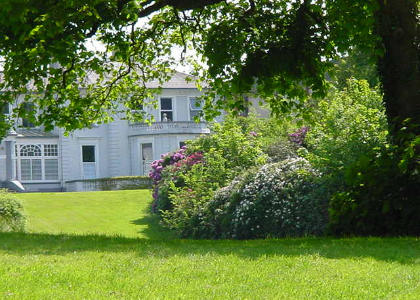
|
| Carriganard | Two members of the Hartry family, William and NIcholas, were leasing houses from the Lane-Fox estate at Carriganard in 1848. William occupied the house valued at £12 7s while Nicholas held a house valued at £10 [S579089]. The original buildings do not appear to be extant now. | |
| Kilbarry (Gaultiere) | John Hartry was leasing this property from the Lane-Fox estate at the time of Griffith's Valuation, when it was valued at £12 5s. The property is no longer extant and major modern development has taken place in the area. | |
| Ballyhoo | William Hurley was leasing this property from the Lane-Fox estate in 1848 when it was valued at almost £12. Modern buildings exist at the site now. | |
| Couse Mill | Richard Power was leasing this property from David O'Neill Power at the time of Griffith's Valuation, when it was valued at £22 and included a mill. The mill is labelled on the 1st-edition Ordnance Survey Map but does not appear on the later 25-inch edition of the 1890s. | |
| Ozierbank House | Mrs. Hannah Palmer was leasing this property from the Leper Hospital Trustees in 1848, when it was valued at £16 10s. It is labelled as Ozierbank House on the 25-inch Ordnance Survey map of the 1890s. The building is no longer extant. | |
| Ballytruckle (Waterford) | In 1848, Baron Lefroy is recorded as the lessor of a property at Ballytruckle, barony of Gaultiere, county Waterford. This is possibly Thomas Langlois Lefroy, of Carrigglas, county Longford, Baron of the Exchequer. He had married Mary Paul, of Silver Spring, county Wexford. The house at Ballytruckle was leased to Mrs. Ellen Alcock and valued at £13. The site is now occupied by modern buildings. | |
| Prospect House (Gaultiere) | Westerna Lewis was leasing this property from the representatives of M.Hayes at the time of Griffith's Valuation, when it was valued at £29 15s. A small building is shown on the 1st edition Ordnance Survey map but a more substantial one, labelled Prospect House, appears on the 25-inch map of the 1890s. A house is still extant at the site. | |
| Ballycar (Cove) | George Gibsen was leasing a property at Cove from John Purcell Fitzgerald in 1848 when it was valued at £15. This may be the house, built after the 1st Ordnance survey and labelled on the 25-inch map of the 1890s as Ballycar House. The property at the site is now used as offices. |
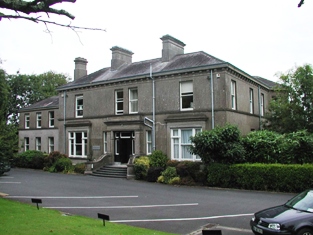
|
| Glenville Cottage (Gaultiere) | At the time of Griffith's Valuation, this property was occupied by Captain P.C. Lamphiere, leasing from the Fitzgerald estate. It was valued at £17 at the time. It is labelled Glenville Cottage on the 25-inch Ordnance Survey Map of the 1890s but as Cove Cottage on the 1940s edition. A house is still extant at the site. | |
| John's Hill House | Occupied by Captain Simon Newport at the time of Griffith's Valuation, when it was valued at £28. Newport was leasing it from his wife's uncle, Robert H. Paul. It is labelled Bishop's House on the 25-inch Ordnance Survey Map of the 1890s when it had become the residence of the Roman Catholic bishops of Waterford and Lismore. | |
| Knockane Lodge | Hussey de Burgh cites Knockane Lodge as the address of William H.F. Bosanquet in the 1870s. This may the second house noted in the townland of Knockane at the time of Griffith's Valuation, which was being leased by the Rockett family. | |
| Woodlock House (Portlaw) | A house built for the Malcolmson family after Griffith's Valuation, it is labelled Woodlock House on the 25-inch Ordnance Survey map of the 1890s. The National Inventory of Architectural Heritage indicates that it was designed by John Skipton Mulvany. In the twentieth century it became a convent and is still extant and occupied. |

|
| Rossmore House | At the time of Griffith's Valuation, Benjamin Barton was the lessor of a property valued at over £13. He also held lands from the Marquis of Waterford's estate in the parish of Rossmore, barony of Decies without Drum. |

|
| Amberhill House | Wilson, writing in 1786, refers to Amber Hill as the seat of Stephen Worthvale. By the time of Griffith's Valuation, this townland was part of the St. Leger estate and Amberhill was occupied by Stephen Gamble when the buildings were valued at over £8. A farm is still extant at the site. |

